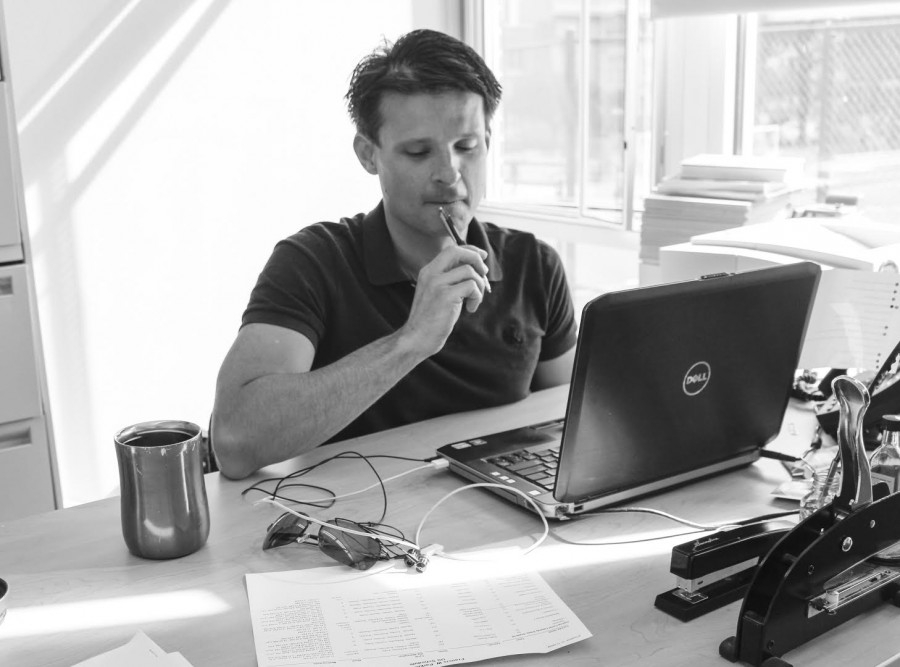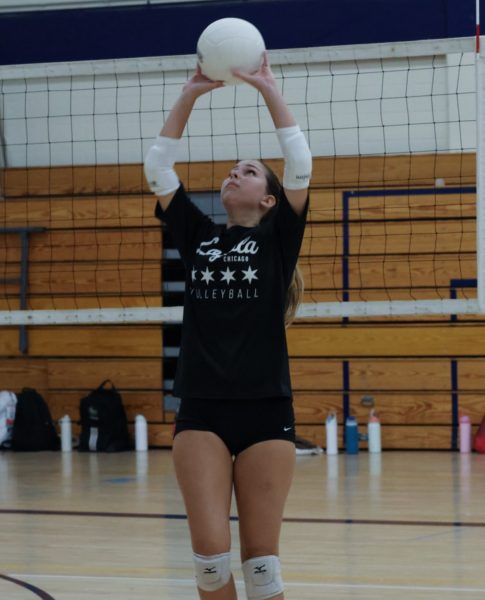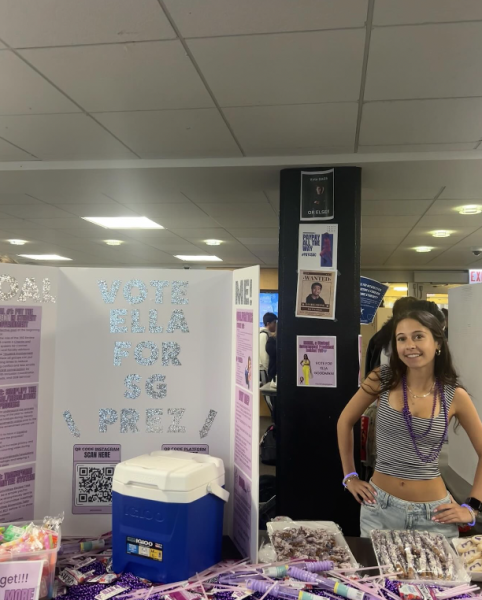Schedule Change Process Revamped
Requests made through email, not in person
Photo credit: Katrina Holceker
McCaw works to fix students’ schedules.
This year, the administration is trying a new schedule-changing process that allows students to send emails to registrar Matt McCaw regarding their requests. The new process was implemented by assistant principal Ruth Jurgensen.
According to Jurgensen, the old process, in which changes were decided by who was in line first, seemed to encourage a more panicked state of mind as opposed to a more thoughtful process for the students.
“We are a small school,” Jurgensen said, “we are student-centered, we are very much focused on the individual, and we really want the schedule experience and the student experience to be an individualized one.”
Schedule changes are not decided based on the time a student sends a request. According to McCaw, multiple factors are reviewed before assigning new classes to students; including seniority, requirement fulfillment, and space.
Prior to this year, students looking to change their schedules would arrive at school in the summer as early as six in the morning and sometimes earlier to write their names on a list of those seeking a meeting with Upper School Coordinator Rolanda Shepard. Students would spend their entire day waiting outside her office, anticipating an open spot in their desired class.
“I think that I got really lucky freshman year and was set with classes and breaks that I wanted,” sophomore Ray Blickstein said. “This year, it seemed easier to do that because the amount of seniority given to upperclassmen was reduced.“
By the end of the day in the old process, a significant portion of students were unhappy with their schedules and had to endure the added stress in the upcoming year.
According to Jurgensen, it was clear that a change was needed. “The idea of students lining up outside to get into a class just seems so highly unusual to me,” Jurgensen said. “Change is hard, but knowing that something does not work sort of allows for that catalyst to try something different. It could not be worse than having students outside the school at three, four in the morning waiting to change a class, and that was what we were seeing.”
The only factor of the process that remains the same is the add and drop period during the first two weeks of school, which will be managed by Shepard.
So far, the feedback has been positive, and the new process is accommodating, according to McCaw.
“We realized that communicating with people via email, even with so many other options out there, seemed like the only thing that worked,” McCaw said, “so I thought that might help busy students take care of their classes for the upcoming year.”
Junior Nina Sachs sees a strength and a weakness in the new process.
“I think it is probably easier on the teachers,” Sachs said, “but it can be difficult to explain in an email why you want to switch from one class to another.”
McCaw believes there is still room for improvement. “I would like to continue to make changes available over email,” McCaw said, “but also shoot for an earlier release date that would give students a chance to make adjustments before leaving school for summer.”
Jurgensen notes that further improvements will be created by the Upper School faculty, staff, and head based on responses to the new process.

Desiree Shafaie is a freshman and this is her first year writing for The Parker Weekly. She is excited to be a staff writer and part of the Weekly team. Her other interests include Model UN, tennis, and traveling.










